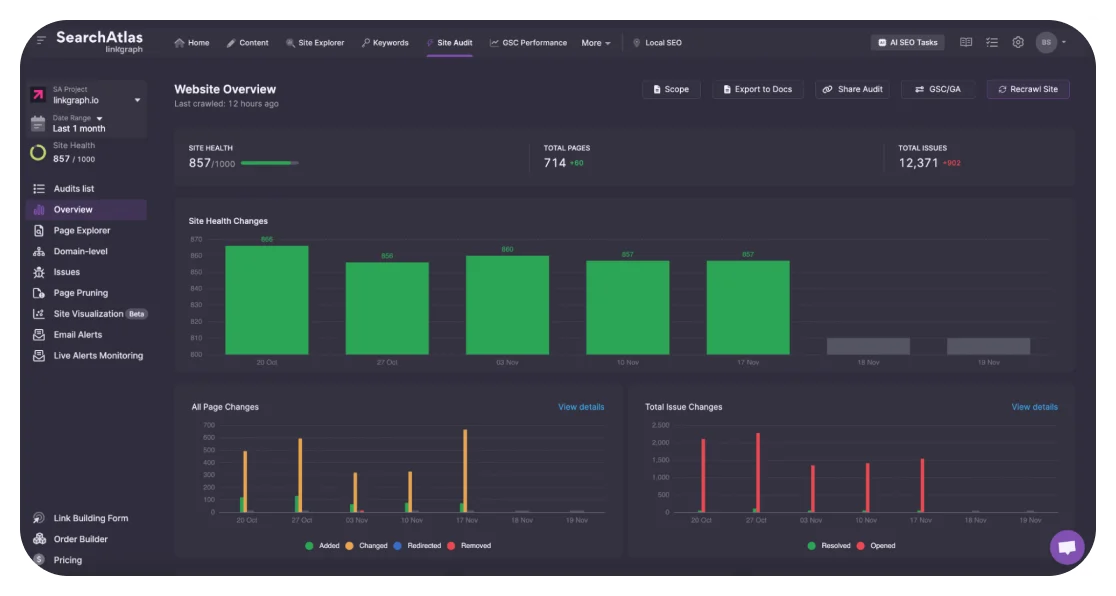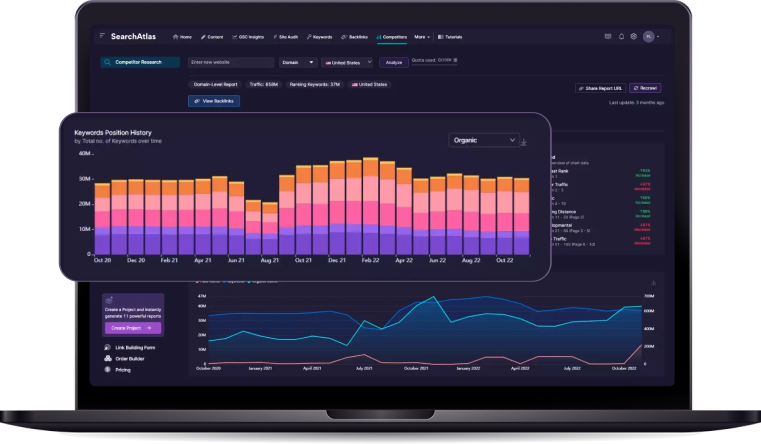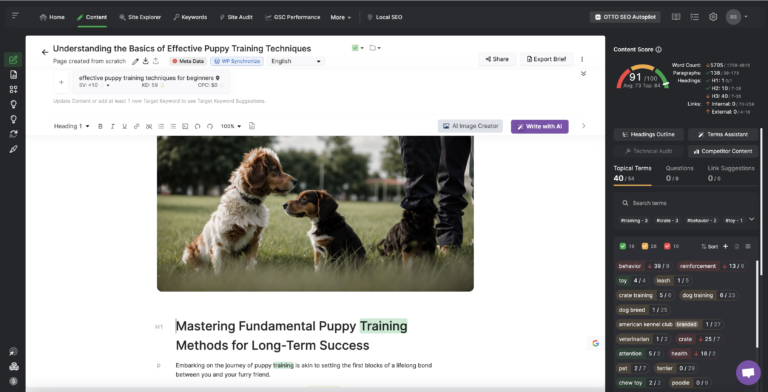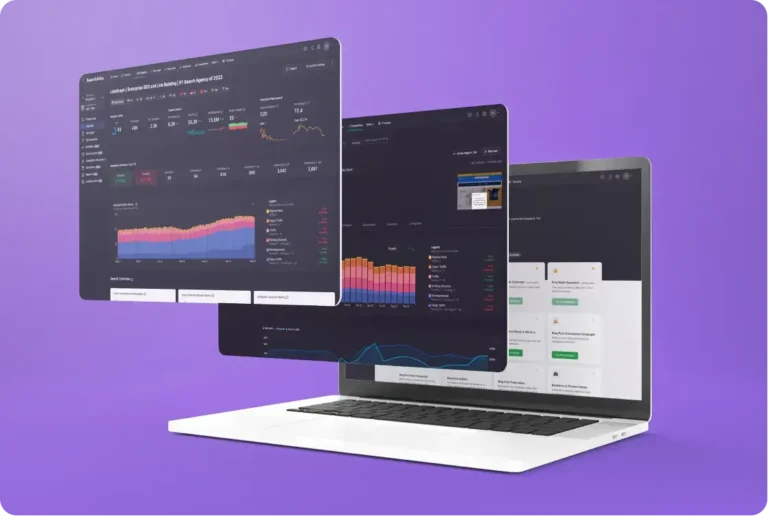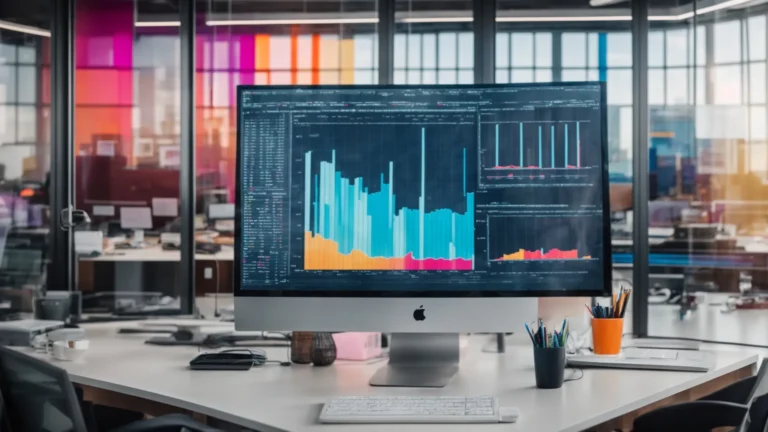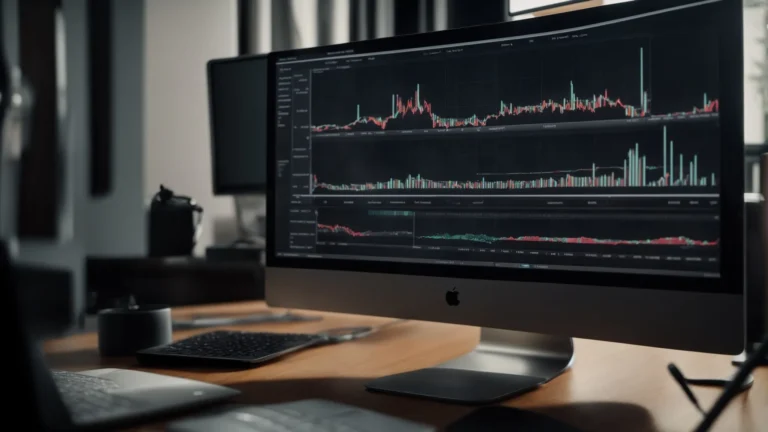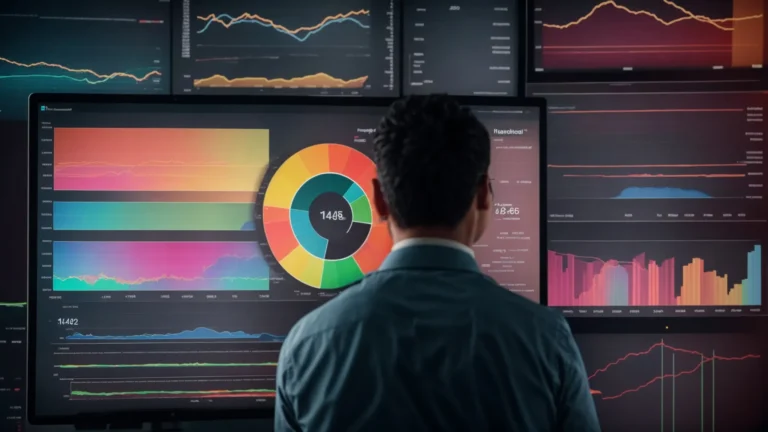Maximizing Your Blog’s SEO Potential: A Comprehensive Guide
In the competitive realm of digital marketing, refining a blog’s search engine optimization (SEO) is vital for drawing search traffic and capturing audience attention.
Amidst the myriad of SEO strategies, one must navigate through keyword research, content optimization, and robust link-building practices to elevate a blog’s online presence.
Aligning these tactics with the evolving algorithms of search engines can set the stage for increased visits and conversions.
To effectively leverage Search Atlas tools for cultivating a high-performing SEO blueprint, it is essential to grasp the underlying principles and best practices of blog SEO.
Keep reading to unearth the methods to enhance your blog’s SEO potency and foster an environment for sustained digital growth.
Key Takeaways
- Strategic SEO Involves Understanding and Leveraging Algorithmic Ranking Factors Through Keyword Research, Content Quality, Site Structure, Backlink Profile, and User Experience
- Effective on-Page SEO Requires Optimizing Title Tags, Headings, Content Text, Meta Descriptions, and Image Alt Text to Enhance Search Engine Visibility and User Engagement
- Off-Page SEO Practices Like Link Building and Social Engagement Are Vital for Establishing a Blog’s Authority and Credibility in the Industry
- Technical SEO Is Fundamental for Ensuring Site Infrastructure Meets Search Engine Requirements, Impacting Indexing and User Satisfaction
- Regular SEO Audits Are Essential for Identifying Improvements in on-Page, Off-Page, and Technical SEO, Leading to Refined Strategies and Better Performance
Understanding the Foundations of Blog SEO

At the core of any successfully optimized blog lies a profound understanding of SEO’s dynamic and multifaceted nature.
Embarking on the journey to maximize a blog’s search engine visibility begins with a deep dive into the algorithms that dictate search rankings, where knowledge is paramount for crafting content that resonates with both search engines and users.
Acknowledging on-page SEO practices not only sharpens the relevance of individual posts but also enhances the user’s navigational experience.
Similarly, the impact of off-page SEO extends the blog’s influence through strategic backlinks and social signals.
Meanwhile, technical SEO remains a critical backbone to any strategy, ensuring that site architecture, loading speeds, and mobile-friendliness align with the stringent requirements of modern search engine algorithms.
Together, these pillars form the framework within which bloggers and content creators can elevate their SEO endeavors for impactful, measurable results.
Grasping the Basics of Search Engine Algorithms
The foundation of any search engine’s decision-making lies in complex algorithms, ever-evolving and designed to determine the relevance and authority of a blog site. It’s here that factors such as keyword usage, site structure, and the quality of content are meticulously scrutinized by search engines to assign visibility in search results.
At the heart of understanding these algorithms is grasping the weight they place on various ranking factors: from the deployment of keywords within well-crafted content to the garnering of authoritative backlinks that underscore a site’s credibility. Success hinges on recognizing and aligning with these algorithmic preferences to improve one’s standing on the search engine results pages (SERPs):
- Keyword Research: Identifying and utilizing focus keywords that align with the search intent of the target audience.
- Content Quality: Crafting informative and engaging content that addresses user queries and encourages longer site visits.
- Site Structure: Ensuring clear navigation and a sitemap that search engines can easily crawl and index.
- Backlink Profile: Developing a robust backlink strategy to enhance domain authority and search engine trust.
- User Experience: Creating a seamless, mobile-friendly user experience to lower bounce rates and boost engagement.
Recognizing the Value of on-Page SEO
Within the realm of on-page SEO, the significance of fine-tuning the elements that constitute a blog’s individual page cannot be overstated. It’s the meticulous optimization of these factors that informs search engines of a blog’s relevance to particular queries, thereby influencing its ascendance in SERP rankings.
Factors such as title tags, heading structure, and the strategic inclusion of target keywords within the content contribute to a stronger SEO profile for the page. The incorporation of optimized meta descriptions and alt text for images also enhances search visibility while improving user experience:
- Title Tag Optimization: Crafting compelling and concise title tags that incorporate focus keywords.
- Heading Hierarchy: Organizing content with a logical structure using H1, H2, and H3 tags.
- Keyword Placement: Ensuring target keywords are naturally integrated into the text while maintaining readability.
- Meta Descriptions: Writing descriptive snippets under 160 characters that summarize the page content and include the target keyword.
- Image Alt Text: Providing descriptive alt text for images, which includes the focus keyword for better image search results and accessibility.
Audit tools, like the On-Page Audit Tool, empower content creators to analyze and refine the elements of their blog posts, from title tags to readability. As part of a comprehensive content strategy, these refinements work synergistically to attract not only the algorithmic eyes of search engines but also the genuine interest of potential visitors.
Exploring the Role of Off-Page SEO
While on-page elements are pivotal in informing search engines about the relevance of content, off-page SEO plays an indelible role in establishing the authority and trustworthiness of a blog. This dimension of SEO concentrates on building a blog’s reputation beyond its own pages, primarily through the cultivation of backlinks from reputable sources.
Strategic link building prompts search engines to recognize a blog as a node of quality within a broader topical landscape, potentially leading to higher rankings in search engine results. Off-page SEO efforts must be genuine and focused, targeting relationships with industry figures and guest post opportunities that drive value:
- Backlink Acquisition: Forge connections that lead to quality, contextual backlinks from respected entities within the blog’s niche.
- Guest Blogging: Write compelling guest posts for authoritative sites to gain exposure and a coveted backlink.
- Social Engagement: Leverage social media platforms to amplify content reach and foster community, indirectly influencing SEO.
Delving Into Technical SEO Essentials
Technical SEO stands as the cornerstone ensuring that a blog’s infrastructure meets the technical requirements of modern search engines, thus facilitating better indexing and ranking. This involves optimizing a website platform’s underlying code and ensuring seamless functionality across various devices, addressing elements like site speed, mobile responsiveness, and secure connections, all pivotal for optimal search engine crawlability and user satisfaction.
Moreover, the clarity and organization of a blog’s sitemap play a significant role in assisting search engines in understanding the structure and content distribution, which aids in efficient page indexing. By regularly conducting technical audits, such as utilizing XML sitemap checks and ensuring proper redirect implementations, bloggers can preempt issues that might otherwise impede search engine traffic potential and ultimately hinder user engagement and conversions.
Crafting High-Quality Content for SEO

In the quest to propel a blog’s SEO potential to new heights, the art of content creation is often hailed as the centerpiece of a sound strategy.
Excellence in content writing hinges on the sophisticated interplay of several pivotal components: rigorous keyword research paired with the strategic implementation of those keywords, the adept structuring of posts to captivate and retain visitor attention, and the delicate balance of weaving keywords into prose with a seemingly effortless grace.
Each element plays an instrumental role in formulating blog posts poised to thrive in the competitive environment of search engine findings and user engagement.
Researching and Selecting the Right Keywords
Unlocking the full potential of blog seo begins at the foundation of keyword research, selecting terms that perfectly encapsulate a blog’s core topics and audience’s search habits. It’s through this meticulous process that Search Atlas shines, offering cutting-edge tools such as a Keyword Research Tool that digs deep into the search landscape, delivering data-driven insights on search volume, competition, and relevance for content strategists.
After pinpointing the appropriate target keywords, the next critical step is seamlessly integrating these terms into the blog content. Search Atlas aids content creators by suggesting strasearctegically placed keywords that maintain the natural flow of text, catering to both the discerning eyes of search engines and the varied interests of readers.
| SEO Element | Tool Utility | Impact on Blog Content |
|---|---|---|
| Keyword Research | Uncover relevant keywords with significant search volume. | Informs the choice of topics and improves the visibility of blog posts. |
| Content Optimization | Integrate target keywords effectively within the content. | Enhances readability for users and search engine comprehension. |
Structuring Your Posts for Optimal Engagement
Establishing a clear and intuitive structure for a blog post is paramount, as it aids readers in navigating the narrative with ease and emphasizes key points. Search Atlas equips creators with the Content Planner, an invaluable resource tailored to help content professionals map out their posts, ensuring each section naturally progresses whilst maintaining the focal point on the target keyword.
Effective blog post structuring also demands attention to visual appeal and text hierarchy, encouraging higher engagement and longer page visits. Search Atlas’ Topical Map can assist writers in constructing posts that not only inform but also visually engage the audience, potentially leading to improved click-through rates (CTRs) and a bolstered SERP presence.
Balancing Keyword Usage With Natural Writing
Harmonizing keyword placement with the natural flow of language is crucial for maintaining the readability of blog content and enhancing the user experience. Overstuffing text with keywords can disrupt the narrative, leading to an adverse impact on both searcher engagement and search engine rankings.
To ensure the delicate equilibrium between SEO and readability is not compromised, Search Atlas employs the assistance of SEO AI Otto, a tool that optimizes keyword density without sacrificing the content’s authenticity. This allows creators to focus on delivering value to their audience while concurrently catering to the algorithmic needs of search engines:
- SEO AI Otto analyzes blog post text to recommend optimal keyword saturation.
- The tool guides writers to place keywords contextually within the content.
- It preserves the natural tone, making the inclusion of target keywords unobtrusive and fluid.
Optimizing Your Blog Posts for Maximum Visibility
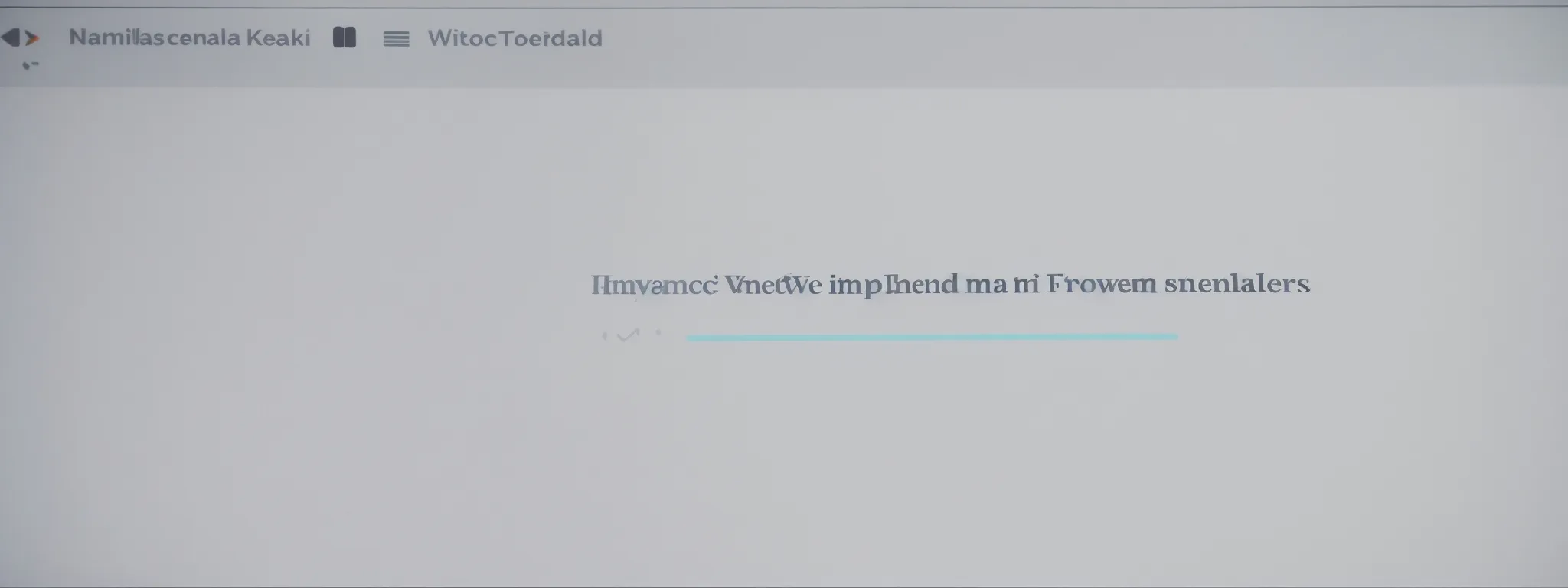
To eclipse competitors in the digital spectacle of search engine results, one must master the art of optimizing blog posts.
This pivotal focus on optimization encompasses a diverse array of techniques, each designed to enhance the discoverability and appeal of content to both search engines and prospective readers.
The deliberate refinement of titles and meta descriptions aims to maximize click-through rates, a beacon that drives traffic to the blog.
Meanwhile, headers and subheaders serve as structural signposts that guide visitors through the narrative, while also signaling relevance to search algorithms.
Furthermore, implementing SEO-friendly URL structures underscores the accessibility and clarity of content, transforming each post into a streamlined pathway to heightened visibility and increased user engagement.
With these strategies as a compass, bloggers can steer their sites toward the coveted top positions in the SERPs, where visibility begets visitors, and content quality cements their stay.
Enhancing Titles and Meta Descriptions for Click-Through Rates
Preparing blog titles and meta descriptions requires a methodical approach, with a clear focus on sparking curiosity and providing clarity. An effective title tag not only contains the primary keyword to satisfy search engines but also exudes a magnetic pull on the searcher, compelling them to click. Similarly, a proficiently crafted meta description offers a succinct preview of the blog content, weaving in the target keyword while promising value that is too enticing to bypass, thus improving click-through rates.
Bloggers striving for higher visibility must refine their title tags and meta descriptions, considering them as prime real estate for optimization. These elements act as the first interaction point between the blog content and potential visitors, with their ability to allure and inform being pivotal in converting SERP impressions into actual site traffic. By enhancing these critical components, content creators set the stage for increased search traffic and engagement, laying the groundwork for not just visitors, but conversions as well.
Utilizing Headers and Subheaders Effectively
Mastering the use of headers and subheaders is a tactical endeavor, often undervalued in its power to structure a narrative and simultaneously resonate with search engines. These organizational elements not only establish a coherent flow within a blog post, aiding in reader comprehension, but also function as critical SEO markers, emphasizing the key themes of the content to search algorithms.
Strategic placement of headers and subheaders acts as signposts, guiding readers through the terrain of a blog post while enhancing the visibility of content in the eyes of search engines. An effective header conveys the summary of the following section, ensuring that both skimming visitors and search algorithms swiftly grasp the core messages, amplifying the post’s relevance in SERPs.
Implementing SEO-friendly URL Structures
Within the broader discourse of blog SEO, the importance of implementing SEO-friendly URL structures cannot be overstated. URLs serve as a direct line to content, and when optimized, they provide clean and succinct pathways that search engines and users alike can navigate with ease, accentuating the blog’s overall findability and search engine appeal.
Experts contend that a well-crafted permalink should incorporate relevant keywords while omitting superfluous parameters or numbers that obfuscate the page’s subject matter. The precision in structuring SEO-friendly URLs translates to unambiguous, descriptive pathways, facilitating a boost in the blog’s indexation and user accessibility, thereby sharpening its search engine presence.
Boosting Site Authority Through Strategic Link Building

In today’s digital marketing arena, boosting a blog’s authority is paramount for gaining traction in the vast expanse of search engine results.
As content creators venture into the intricacies of SEO, strategic link building emerges as a cornerstone practice, playing a pivotal role in establishing a site’s prominence and trustworthiness.
Identifying pivotal opportunities for weaving internal links not only keeps visitors engaged but also signals to search engines the depth and breadth of a site’s content.
Concurrently, crafting incisive external backlinks through guest blogging positions a blog within a network of thematic relevance and expertise.
Moreover, the adept utilization of broken link building techniques offers a dual advantage—rectifying digital pathways while securing valuable link placements.
Each of these link building strategies, executed with precision, can significantly elevate a blog’s visibility, driving it to the forefront of its niche in the SERPs.
Identifying Opportunities for Internal Linking
An internal linking strategy harnesses the power of structuring a blog in a way that spreads page authority and improves user navigation. It involves creating links that smoothly direct users from one page to another within the same domain, enriching their experience and encouraging longer visit durations.
Diligent identification of internal linking opportunities can greatly enhance the SEO performance of a blog, elevating the visibility of older posts and distributing link equity throughout the site. This process positively impacts a site’s overall structure, as search engines reward the clarity and interconnectedness of content with improved rankings.
| SEO Element | Strategy | Impact on Blog Authority |
|---|---|---|
| Internal Linking | Identify and create links between related content within the blog. | Improves site navigation, increases time on site, and distributes page authority. |
| Content Discoverability | Use strategic anchor text to link back to underperforming posts. | Sends user signals to search engines, highlighting the relevancy of interconnected topics. |
Building External Backlinks With Guest Blogging
Engaging in guest blogging stands as a strategic maneuver to enhance a blog’s external backlink portfolio. Through contributing valuable content to respected blogs within one’s industry, content creators can secure authoritative backlinks, which signal trust and subject-matter expertise to search engines, thus elevating the originating blog’s SERP stature.
This technique not only broadens the reach of a content creator’s influence but also funnels relevant traffic back to their own blog, fostering an environment conducive to increased domain authority. Handled with tact and a focus on quality, guest blogging can yield substantial SEO dividends and position a blog as a key player in its niche.
Leveraging Broken Link Building Techniques
Embarking on broken link building requires a methodical approach that entails scouring the web for links that no longer lead to active content, a scenario that presents untapped opportunities for blogs seeking enhanced authority. By reaching out to site owners with a suitable replacement link to relevant and high-quality content from their blog, creators facilitate the repair of the digital landscape while securing a new backlink, a move that garners favor with search engines.
This nuanced technique not only contributes to the blog’s link-earning efforts but also positions the content creator as a helpful contributor to the web’s overall user experience. Success in broken link building amplifies the credibility and rating of the blog in search engine algorithms, effectively boosting the site’s stature and prominence within its niche markets.
Leveraging Multimedia Elements for Enhanced SEO
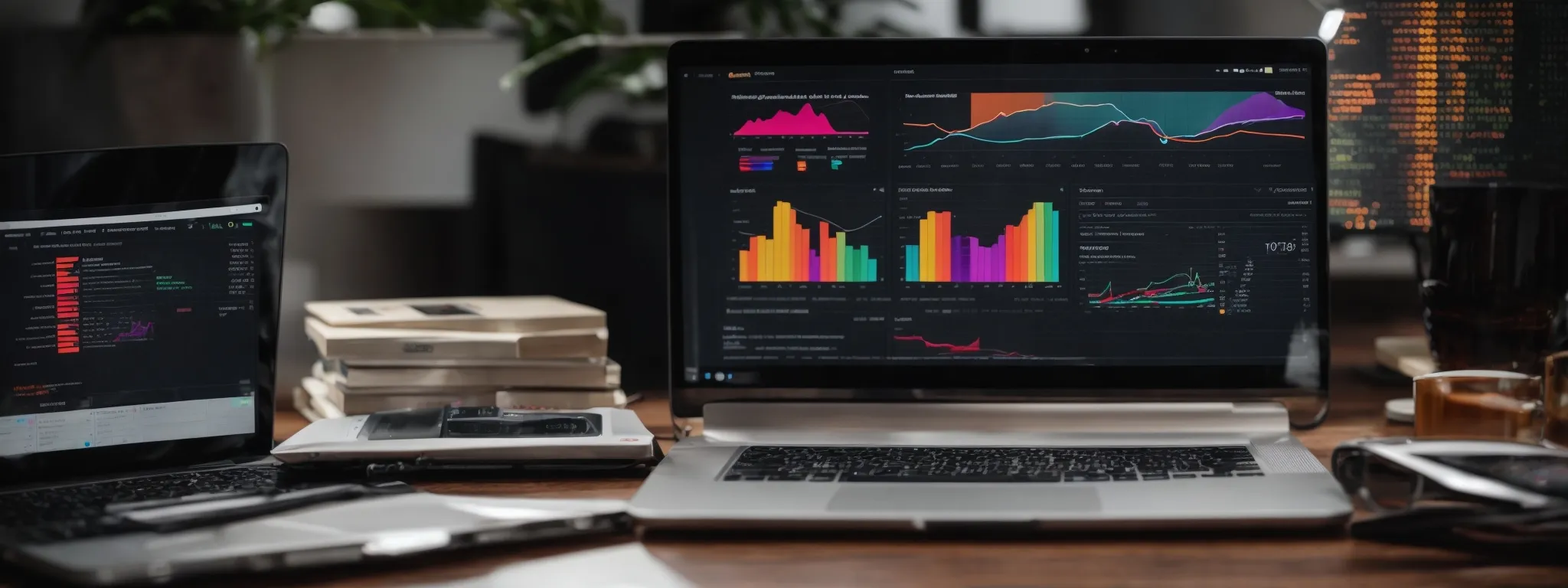
Embarking on a journey to optimize a blog for search engines often involves enhancing textual content, but the strategic integration of multimedia can also yield significant SEO benefits.
The appropriate optimization of images and videos not only contributes to a richer user experience but also aids search engines in understanding and ranking content effectively.
This subsection will explore the nuances of ensuring multimedia elements are fully optimized for search visibility, from the employment of descriptive alt tags and filenames to the ways in which multimedia can captivate and retain audiences, reinforcing the blog’s SEO framework.
Optimizing Images and Videos for Search Engines
For blog content to have a more significant impact on search engine rankings, multimedia optimization shouldn’t be an afterthought. Image and video content, when properly configured with SEO in mind, can lead to a richer experience for visitors and give search engines valuable context for indexing.
Titles, descriptions, and tags associated with videos, along with alt text for images, should contain relevant keywords that align with the blog’s central topics and objectives. This practice allows multimedia to serve as both an information-rich resource for users and an SEO advantage for visibility on SERPs:
| Multimedia Element | SEO Practice | Resulting Benefit |
|---|---|---|
| Images | Adding descriptive alt text featuring target keywords | Increases content accessibility and improves image search visibility |
| Videos | Using keyword-enriched titles and descriptions | Enhances video understanding for search engines and boosts search result relevance |
Employing Alt Tags and Descriptive Filenames
Optimizing the visual elements of a blog post goes beyond mere aesthetics; it’s an intricate part of enhancing a site’s SEO. Employing alt tags on images serves a dual purpose: they improve accessibility for users with screen readers and provide search engines with relevant data to index graphics contextually alongside text. Descriptive filenames, rather than generic or numerical strings, guide both users and search algorithms toward a clearer understanding of an image’s content.
Effectively leveraged, these strategies ensure multimedia works in tandem with textual elements to bolster a blog’s search engine rankings. An alt tag that accurately describes an image’s relevance to the post content, combined with a methodically crafted filename, can significantly aid in the ranking of visual assets in search results:
- Alt tags convey the substance of an image, enhancing the keyword richness of the page.
- Descriptive filenames pave the way for search engines to intuit the context of multimedia content.
Integrating Multimedia to Improve User Engagement
Immersing visitors with various forms of multimedia can significantly amplify user engagement on a blog. Engaging videos, informative infographics, and interactive presentations captivate the audience, encouraging them to invest more time interacting with the content and enhancing metrics such as time on site and page views.
The strategic use of multimedia not only enriches the storytelling aspect of a blog but also caters to diverse learning styles and preferences among users. This approach to content diversification solidifies retention rates, turning casual visitors into loyal readers and advocates for the blog’s brand:
| Multimedia Type | User Engagement Impact |
|---|---|
| Videos | Increases time on site and retention |
| Infographics | Boosts shares and user interaction |
| Interactive Elements | Encourages active user participation |
By seamlessly integrating these multimedia elements, bloggers can cater to the visual and interactive demands of modern audiences. Enhanced user engagement signals to search engines the value and relevance of content, which in turn, can result in higher search rankings and increased organic traffic to the blog.
Harnessing the Power of Social Media for SEO

In the realm of digital marketing, the symbiosis between social media and search engine optimization acts as a catalyst for amplifying a blog’s reach.
As content creators explore the interplay between these dynamic platforms, the strategic use of social media emerges as a critical tool for widening content visibility and eliciting shares across networks.
With each share and interaction, social signals emerge, subtly influencing SEO rankings and signaling the relevance, popularity, and value of the blog’s content to search engines.
A nuanced approach to social media can thus empower bloggers to extend their digital footprint and enhance the SEO potential of their blogs organically.
Increasing Content Visibility and Shares on Social Platforms
Efforts to enhance a blog’s SEO are significantly bolstered when leveraging social media platforms as conduits for expanding reach and promoting content shares. The concerted effort to distribute blog posts through social channels presents an unrivaled opportunity to ignite discussions, increase brand exposure, and drive targeted traffic back to the blog site.
Generating compelling content that resonates on social media serves not only to captivate a diverse audience but also to encourage shares and interactions, which act as social signals to search engines. In this digital era, these collective endorsements serve to subtly affirm the value and relevance of a blog’s content, contributing positively to the blog’s overall search engine optimization efforts.
Encouraging Social Signals to Boost SEO Rankings
Integrating a blog within social media strategy can significantly augment SEO efforts by fostering robust social signals. When a blog post catalyzes user engagement through likes, shares, and comments across diverse social media platforms, it creates a ripple effect that enhances the content’s visibility and aids in building a reputation that is acknowledged by search engines.
Content creators are keenly aware that the strengthening of a blog’s social signals can lead to improved SEO rankings. By crafting content that resonates with the target audience, invoking meaningful interactions, and sharing diligently across company profiles, the resulting social affirmations serve as informal endorsements, subtly yet effectively bolstering the blog’s prominence in search engine evaluations.
Measuring and Analyzing Your SEO Efforts for Improvement
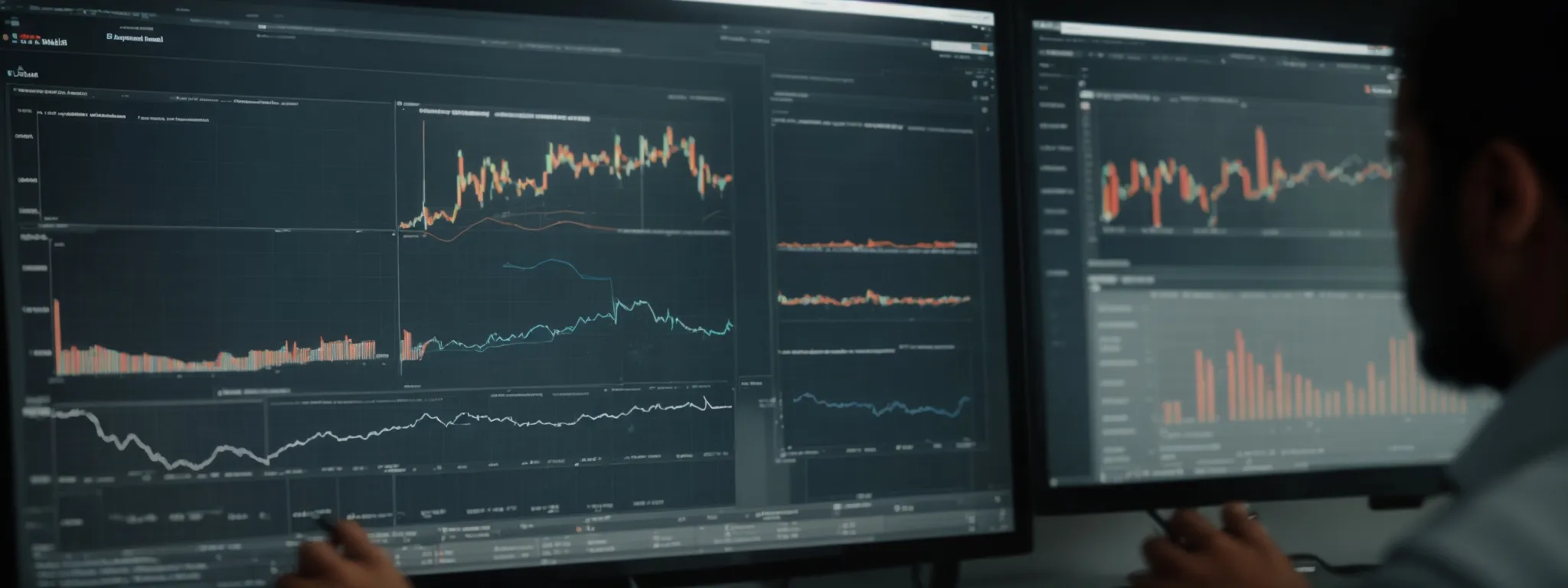
For professionals invested in elevating their blog’s search engine optimization, perpetual vigilance in tracking the efficacy of ongoing SEO efforts is as crucial as the strategic planning that precedes them.
Employing precise tools to monitor keyword rankings and analyze website traffic patterns delivers invaluable insights into the impact of optimization strategies.
Through meticulous assessment of user behavior and feedback from performance metrics, content creators can refine their SEO approaches for heightened performance.
Furthermore, the regularity of conducting comprehensive SEO audits uncovers latent opportunities and pinpoints refinements needed to continually adapt to the ever-changing landscape of search engine algorithms.
This level of diligence ensures that a blog does not merely reach an SEO peak but maintains and exceeds its prominence through vigilant analysis and optimization.
Using Tools to Track Keyword Rankings and Website Traffic
Efficient SEO optimization requires diligent monitoring through tools that assess keyword rankings and trace website traffic patterns. Search Atlas stands as an exemplar in this regard, offering a comprehensive suite of instruments that empower content creators to gauge the performance of their chosen keywords and understand the nuances of their site’s visitor behavior.
- Keyword rankings uncover the effectiveness of keyword placements and offer insight into necessary adjustments.
- Website traffic analytics aid in identifying trends, sources of visitors, and engagement levels.
By capitalizing on these analytical tools, bloggers can make informed decisions to tweak their content strategies and enhance their blog’s SEO potency. These data-driven evaluations not only illuminate achievements but also reveal areas where growth is possible, highlighting the ongoing nature of SEO as a field that thrives on continuous improvement and adaptation.
Assessing User Behavior and Optimizing for Better Performance
Expertly assessing user behavior offers a direct insight into the efficacy of a blog’s SEO strategies, enabling content creators to optimize the user experience and increase overall performance. Through the analysis of metrics such as bounce rate, average time on page, and visitor traffic flow, professionals can discern user preferences and pain points, which are crucial in tailoring content to meet audience needs and search engine criteria alike.
Increasing a blog’s performance hinges on the continual optimization of these user interaction signals. When actions such as navigating to another web page or engaging with multimedia elements reflect a positive user experience, search engines take note, often rewarding the site with higher ranking positions. Such insights drive SEO professionals to refine their content, ensuring each blog post not only captures the target audience’s attention but also maintains their engagement, converting casual visitors into devoted readers and customers.
Conducting Regular SEO Audits to Identify Areas for Enhancement
Indispensable to the optimization process, conducting regular SEO audits offers a detailed snapshot of a blog’s performance across multiple facets of search engine optimization. These audits encompass an exploration of both the minutiae and the comprehensive aspects, revealing strengths and uncovering weaknesses that might otherwise impede a blog’s ranking progress.
SEO audits serve as the compass for strategic enhancements, guiding content creators through a methodical refinement process. By determining which aspects of on-page and off-page SEO require attention, professionals can systematically address areas such as site structure, content quality, and backlink health to fortify their SEO foundation:
| SEO Audit Focus | Key Assessments | Outcomes for Enhancement |
|---|---|---|
| On-Page SEO | Keyword integration, meta descriptions, and content relevance | Targeted improvements in user experience and keyword optimization |
| Off-Page SEO | Backlink profile evaluation and social media presence | Strengthened external domain authority and social signal acquisition |
| Technical SEO | Website loading speeds, mobile responsiveness, and crawlability | Enhanced website performance and improved search engine indexing |
Frequently Asked Questions
How can i improve my blog’s visibility and search engine rankings through seo techniques?
Improving a blog’s visibility and rankings through SEO techniques requires a multifaceted approach that includes thorough keyword research to determine target keywords, optimizing content for searchers’ intent, and building a robust backlink profile to establish domain authority. Additionally, leveraging tools like Search Atlas can streamline SEO efforts and enhance content planning, competitor analysis, and on-page SEO strategies to drive more search engine traffic and engage the target audience effectively.
What are the key elements of high-quality, seo-friendly blog content?
The key elements of high-quality, SEO-friendly blog content are an engaging, informative narrative structured around relevant keywords and a comprehensive understanding of target audience search intent. This content should be well-organized, featuring an optimized title tag, meta descriptions, and headers, while also being enhanced with internal and external links, high-quality images with appropriate alt text, and a layout that is easy to navigate, ensuring both search engines and readers can efficiently access and value the information presented.
What strategies can i use to optimize my blog posts and increase their chances of ranking well in search results?
Effective optimization strategies for blog posts involve conducting comprehensive keyword research, incorporating target keywords naturally within the text, and ensuring accurate, engaging, and informative content that resonates with both search engines and the target audience. Additionally, the strength of a blog’s SEO can be fortified by utilizing tools like Search Atlas, which offers capabilities such as Site Explorer to evaluate competitors, Topical Map for content planning, and an On-Page Audit Tool to refine the technical aspects of SEO.
To thoroughly enhance the visibility and ranking of blog posts within search engine results pages (SERPs), content creators should leverage the Domain Authority Checker and Backlink Analyzer to assess and build a robust backlink profile, pivotal in signaling the relevance and authority of the blog to search engines. Pairing technical optimizations with a commitment to delivering valuable and reader-centric content will invariably lead to improved search engine traffic and better engagement with visitors.
In crafting a compelling content strategy, it’s essential to integrate tools like the Search Atlas Keyword Research Tool, which helps identify keywords with the optimal search volume and relevance to the blog’s focus, and the innovative SEO AI Otto, which provides guidance on SERP features to target. Understanding the intent behind searcher queries enables bloggers to generate content that precisely matches users’ needs, enhancing the probability of conversions.
It’s equally critical to ensure blog posts are easily navigable by both search engines and users, employing best practices such as crafting descriptive title tags, utilizing alt text for images, and perfecting site architecture with a well-organized sitemap. Through these and other innovative SEO techniques, blog content creators can optimize their sites to achieve higher rankings, increased click-through rates (CTRs), and a loyal following among their target readership.
How can i build my blog’s authority and credibility through effective link building?
Building a blog’s authority and credibility through effective link building involves strategically acquiring high-quality backlinks that signal trust and relevance to search engines, coupled with leveraging tools like Search Atlas that offer comprehensive backlink analyzers to scrutinize and plan your link-building campaign. By creating valuable content that garners organic backlinks, engaging in guest posting with reputable sites, and remaining vigilant about backlink health, bloggers can establish their blog as a reputable source of information and expertise in their niche.
What role do multimedia elements, such as images and videos, play in enhancing my blog’s seo performance?
Multimedia elements such as images and videos significantly enhance a blog’s SEO performance by making the content more engaging and shareable, which can lead to increased time on site and a decrease in bounce rate. These elements also present additional opportunities for optimization through alt text and file names, helping search engines understand and rank the content more effectively.
Conclusion
To maximize your blog’s SEO potential, it’s crucial to adopt a comprehensive approach that navigates the complexities of search engine algorithms and tailors content to both search engines and users.
Proper keyword research and application, content quality, site structure, and a robust backlink profile are essential to reinforce relevance and authority in SERPs.
Additionally, fine-tuning on-page SEO elements like title tags, headings, and meta descriptions substantially boosts a blog post’s discoverability.
Off-page SEO strategies such as strategic link building via guest posts and social media engagement are indispensable in expanding your blog’s influence and reach.
Technical SEO optimization ensures that your blog’s foundation is solid, with a focus on mobile responsiveness, site speed, and secure connections enhancing user experience and aiding search engine indexing.
Incorporating high-quality multimedia elements can improve user engagement and further propel SEO outcomes, while active utilization of social media amplifies content reach and fosters relevant social signals.
Finally, regular tracking and auditing of your SEO tactics through analytics tools provide valuable insights, enabling ongoing refinements to navigate the ever-evolving SEO landscape.
By committing to these practices, bloggers can increase their visibility, drive traffic, and maintain a competitive presence in the digital space.
